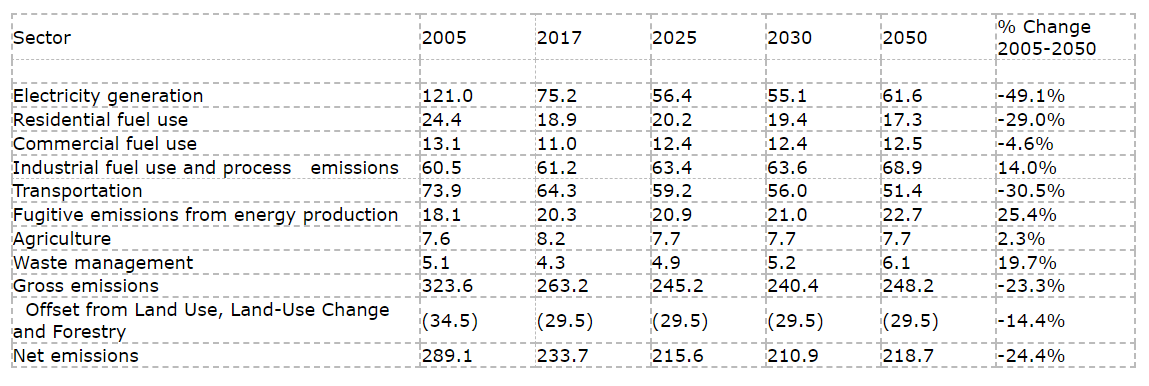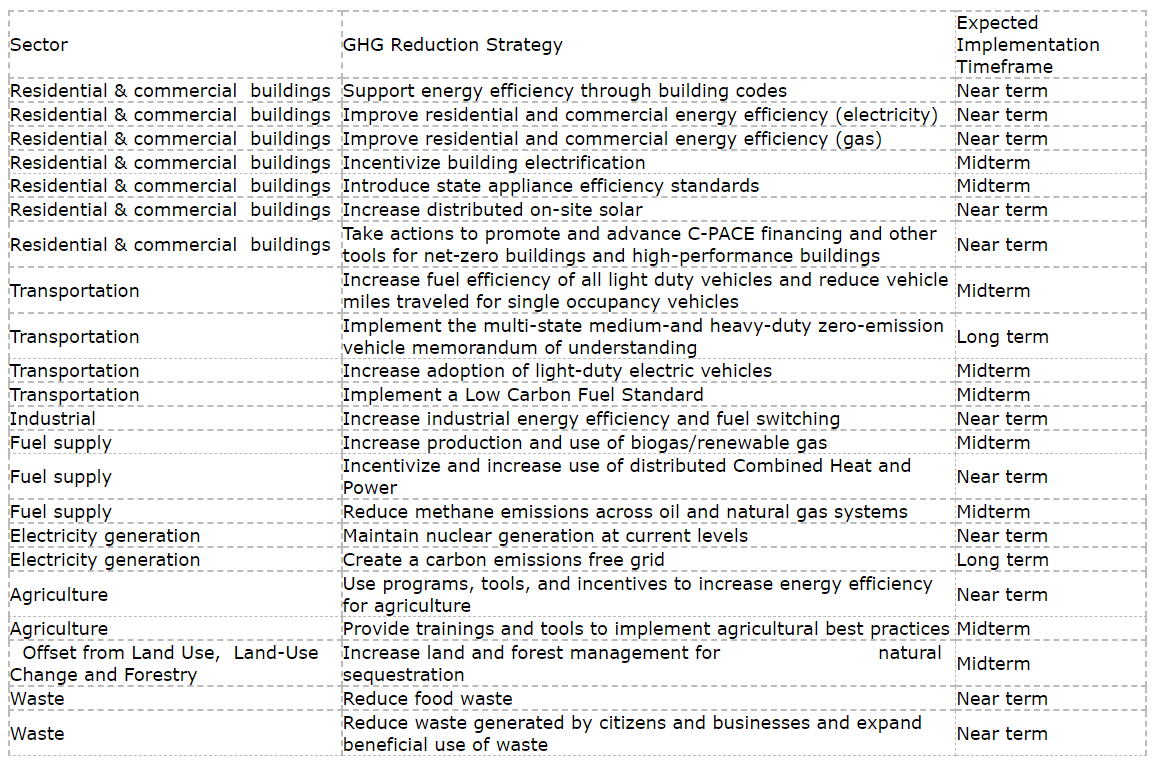Written by Richard Major, PA Chapter Dirty Energy Team Leader
This is an overview of Pennsylvania’s 2021 Climate Action Plan. Other posts will address individual strategies in the Plan for reducing Greenhouse Gases (GHG). The Pennsylvania Climate Change Act of 2008 (Act 70) requires the Department of Environmental Protection (the DEP) to develop a Climate Action Plan and a Climate Impacts Assessment and update them every three years. The most recent Assessment came out in May 2021, followed in September by the current Plan. They were developed concurrently and are the fifth iterations. Both are available on the DEP’s website.
Act 70 also established a Climate Change Advisory Committee to advise the DEP on this work. Its members include representatives from science, business and industry (including fracking and mining), transportation, environmental (including the Sierra Club), social, outdoor and sporting, labor and other interested communities.
The Assessment summarizes the effects and risks that climate change poses to the Commonwealth. The Plan maps how current and potential policies and programs on climate change “can lead to further GHG reductions, increased resiliency, and reduced risk from climate change, to the benefit of all Pennsylvanians”. (p. 2) It describes “DEP’s plan to reduce Pennsylvania’s contribution to climate change and adapt to the current and future impacts of climate change”. (p. 7)
A Business-as-Usual scenario serves as the baseline for assessing GHG emissions. It assumes the Commonwealth simply continues the climate policies and programs already in place or for which significant developments are underway. The Plan then assesses how strategies for GHG reduction and adaptation can improve upon the Baseline. In developing the Plan, the DEP utilized an environmental consultant to model the Baseline and strategies for achieving a better outcome. The Climate Change Advisory Committee provided advice and feedback on the Plan and its development.
Taken together, the Impact Statement and the Plan assess where we are now, review GHG targets for 2025 and 2050, project how closely Business-as-Usual would approach those targets, and then assess the effect of further GHG measures in achieving the targets. The Governor’s Executive Order 2019-01 set those targets as a 26% reduction from 2005 to 2025 in GHG emissions statewide - and 80% by 2050.
The Plan defines GHG as “[g]ases that trap heat in the atmosphere, contributing to global warming and climate change. Common GHGs include carbon dioxide (CO2), methane (CH4), nitrous oxide (N20), and fluorinated gases”. (p. 162) Much of the discussion focuses on CO2, though the other GHG also share in propelling climate change. Methane, for instance, has a greenhouse effect over 80 times greater than that of CO2 over 20 years, though it dissipates more quickly, and is less abundant.
The following table displays CO2 emissions by activity sector under Business-as-Usual. Diminishing use of coal, particularly in electricity generation, propelled the significant decline in Total Gross Emissions since 2005. “Offset from Land Use, Land-Use Change and Forestry” refers to the Commonwealth’s natural carbon sink or CO2 sequestration, which offsets CO2 emissions. Netting this effect against Gross Emissions gives Net Emissions. Projections call for Net Emissions to decrease from 289.1 million metric tons in 2005 to 215.6 and 218.7 million metric tons in 2025 and 2050. The decline between 2005 and 2025 would be 25%, but only 24% between 2005 and 2050.
Pennsylvania emissions by sector, Business-as-Usual scenario
Emissions are in Million Metric Tons of Carbon Dioxide Equivalent (MMTCO2e)
Pennsylvania 2021 Climate Action Plan, p. 14.

Identifying strategies to achieve an 80% reduction followed an iterative process that took into account a range of factors, including likely GHG reduction, ease and cost of implementation, cost-effectiveness, benefits to air quality and public health, potential to improve climate resilience, and benefits to environmental justice and equitable participation in and benefit from program opportunities (say, jobs). The list is not exhaustive, but represents a set of strategies for reducing GHG to Pennsylvania’s targets. Advances in technology and changes in strategy economics may recommend others.
Selected GHG Reduction Strategies by Sector
Pennsylvania 2021 Climate Action Plan, p. 26.

The Plan describes the environmental, economic, and social benefits of each strategy, together with the costs or savings from implementing it. Environmental benefits, and costs or savings, are stated as reductions in GHG emissions and changes in energy and fuel use. Economic effects are described in terms of changes in employment, disposable income, and the Commonwealth’s economic output. Social benefits and costs are expressed as effects on air quality (changes in certain pollutants, such as nitrogen oxides) and associated public health and social values, such as equity and resilience.
Other posts to this blog will address specific strategies from this table. The PA Chapter Food & Ag team, Zero Waste team and the Clean Energy team have already posted their critique. Look for others in 2022.
Achieving GHG emissions reduction targets in the energy generation sector in Pennsylvania relies significantly on nuclear power, which is assumed to fuel about 40% of generation through 2050. The Commonwealth is the nation’s second-largest generator of electricity from nuclear power. The Plan calls for maintaining nuclear generation at current levels which, in turn, assumes all nuclear plants now in operation would remain so at least through 2050, without any retirements.
Figure 19 from PA CAP document page 36
To achieve the emissions target for 2050, nearly all electricity generated in Pennsylvania will have to come from nuclear and renewable sources. (p. 19) Forecasts anticipate those two sources will progressively supplant today’s substantial reliance on fracked gas, plus coal. Investments in the power grid will be necessary to enable renewable sources to play such an important role. For instance, smart grid applications will be increasingly necessary to balance variable supply with fluctuating demand. Thus, the CAP calls for creating a “carbon-free grid” by 2050, as illustrated above. (Figure 19 can be found on page 36 of the CAP document) The steady decline of grid electricity from gas is key to achieving this objective.
Implementing the Plan presents an array of challenges - technological, social, employment, training, economic, financial, stranded asset, political, regulatory, and persuasive. Assuring continued dependence on nuclear power would excite controversy, not least over the danger from spent fuel and the failure thus far to develop safe and permanent storage options.
Opportunities include increased employment, business expansion, building resilience, increased equity, environmental and health benefits, and optimized land use. Benefiting from those opportunities depends on cooperation across parties, including private, legislative, regulatory, local government, Federal, business and industry, utilities, financial, and non-profit.
The challenge is considerable. The pay-off is existential.
Read topic-specific comments on the PA CAP in recent SC/PA blog postings: Clean Energy, Food & Agriculture, Zero Waste
This blog was included as part of the March 2022 Sylvanian newsletter. Please click here to check out more articles from this edition!